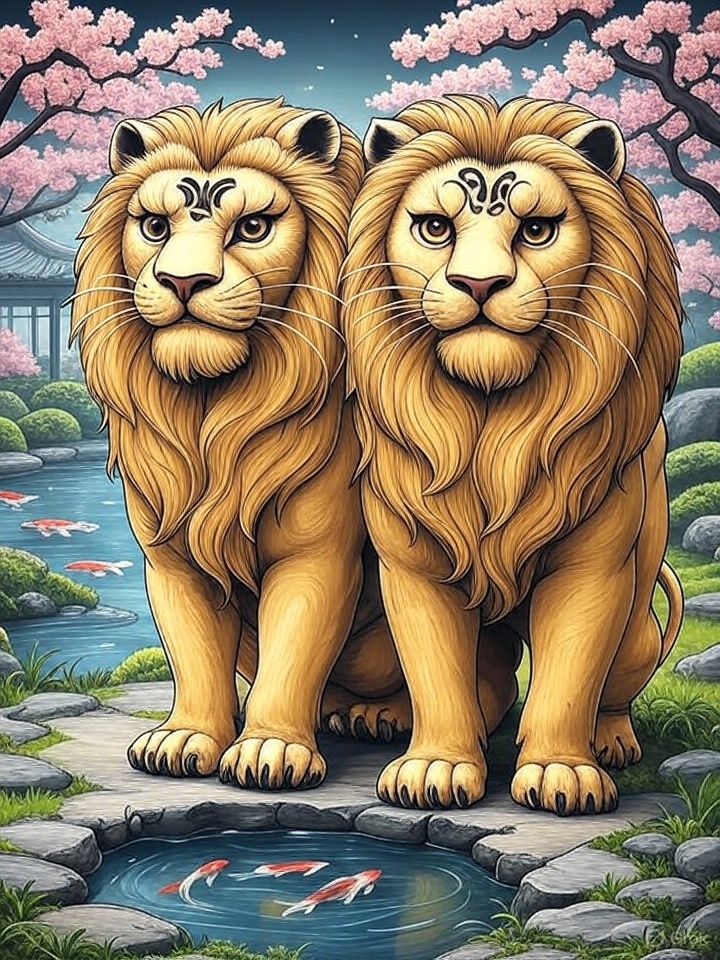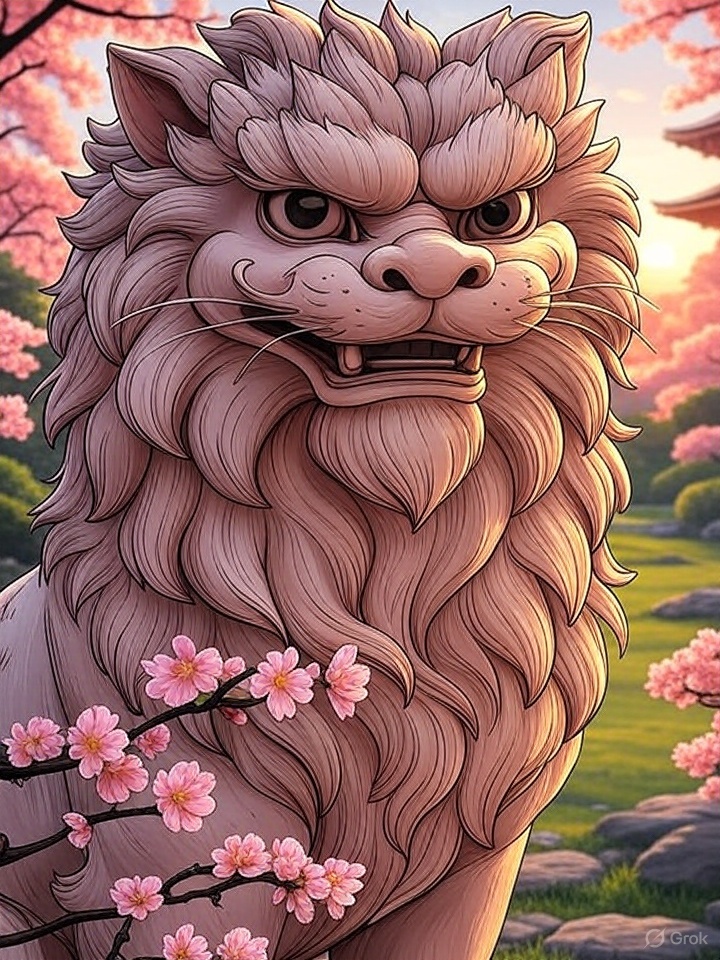Name Meaning
Shishi (獅子) is the Japanese term for lion, commonly used to refer to the traditional guardian statues found at temple gates.
Origin
- Introduced from China and Korea through Buddhist and Shinto traditions.
- Eventually evolved into distinct lion-dog forms in Japanese art and temple architecture.
Appearance
- Usually appear in pairs: one with an open mouth (“A”) and one with a closed mouth (“Un”).
- Stylized, muscular bodies with fierce expressions.
- Some may have a horn or be depicted with a ball or cub.
Behavior & Myths
- Stand guard at temple or shrine entrances to ward off evil spirits.
- Considered sacred protectors and part of temple ritual symbolism.
- Believed to balance spiritual forces—destruction and creation.
Symbolism
- Represent courage, protection, and divine guardianship.
- The “A-Un” posture symbolizes the beginning and end of all things.
- Often confused with Komainu, which serve similar roles in Shinto contexts.

